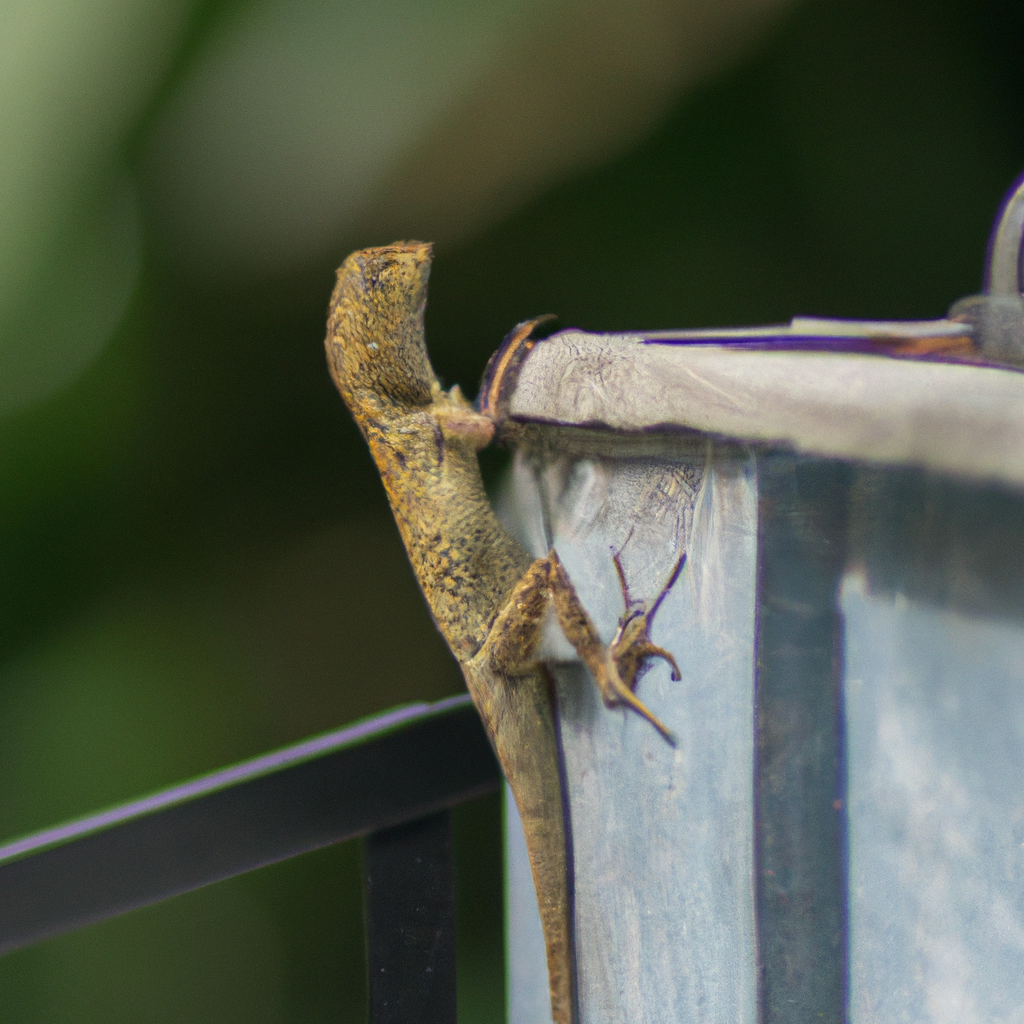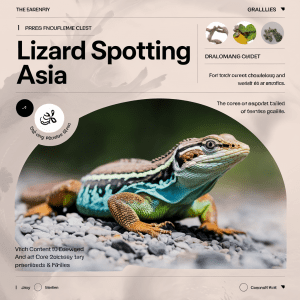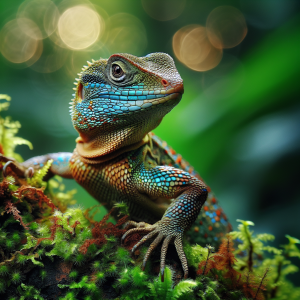Introduction: Lizards in Asia
Lizards in Asia exhibit a fascinating array of species that have adapted to diverse environments across the continent. From the tropical rainforests of Southeast Asia to the arid deserts of Central Asia, these reptiles have evolved unique characteristics to thrive in their habitats. Asia is home to a rich diversity of lizards, ranging from the colorful geckos of the Philippines to the iconic Komodo dragons of Indonesia.
One of the defining features of lizards in Asia is their incredible variety in size, color, and behavior. Some species, such as the flying dragons, have developed specialized adaptations like wing-like membranes that allow them to glide between trees, while others, like the monitor lizards, are known for their impressive size and predatory abilities. The vibrant hues of many Asian lizards serve as both camouflage and a means of communication, with some species displaying striking patterns to attract mates or warn off predators.
Asian lizards play a crucial role in the ecosystem as both predators and prey. They help control insect populations and serve as a food source for larger predators, contributing to the balance of their respective ecosystems. Understanding the different species of lizards in Asia provides valuable insights into the complex web of life that exists on the continent.
Exploring the world of lizards in Asia offers a glimpse into the intricate relationships between these reptiles and their environments. Whether you are a seasoned herpetologist or a nature enthusiast, the diverse array of Asian lizards promises an enriching and captivating experience for anyone interested in the natural world.
The Rich Diversity of Asian Lizards
Asia is home to a rich diversity of lizards, with a wide variety of species inhabiting the continent’s diverse landscapes. From the lush rainforests of Southeast Asia to the arid deserts of Central Asia, these fascinating creatures have adapted to thrive in a range of environments. One of the most notable features of Asian lizards is their incredible diversity in size, color, and behavior.
In Asia, you can find lizards ranging from the tiny geckos that cling to walls with their sticky toe pads to the large monitor lizards that roam the forests and waterways. Each species has its own unique characteristics and adaptations that help it survive and thrive in its specific habitat. Some lizards are known for their vibrant colors and intricate patterns, while others blend seamlessly into their surroundings with their camouflaged appearance.
Asian lizards play a crucial role in the ecosystems they inhabit, serving as both predators and prey. They help control insect populations, pollinate flowers, and contribute to the overall balance of their ecosystems. Some species of lizards are considered keystone species, meaning that they have a disproportionately large impact on their environment relative to their abundance.
As we delve deeper into the world of Asian lizards, we begin to appreciate the intricate web of life that connects these creatures to their surroundings. By understanding and protecting the diverse range of lizards found in Asia, we can help preserve the rich biodiversity of the continent and ensure a sustainable future for these fascinating reptiles.
Popular Species of Lizards in Asia
Asian lizards encompass a wide array of species that captivate both researchers and enthusiasts alike. From the iconic Komodo dragon to the vibrant Tokay gecko, the continent boasts a diverse range of lizards that have adapted to various climates and habitats. One popular species found in Asia is the Chinese water dragon, known for its striking appearance and semi-aquatic lifestyle. These lizards are commonly found near water sources, where they display their impressive swimming abilities.
Another well-known Asian lizard is the monitor lizard, which includes the impressive Komodo dragon. These formidable predators are the largest lizards in the world and are native to the Indonesian islands. With their powerful jaws and keen sense of smell, Komodo dragons are apex predators in their ecosystem.
The tokay gecko, with its distinctive blue and orange markings, is another standout species found in Asia. These nocturnal lizards are known for their loud vocalizations, which have earned them their name due to the sound they make. Tokay geckos are arboreal creatures, often found in trees and buildings in tropical regions.
Overall, the popular species of lizards in Asia showcase the continent’s rich biodiversity and the fascinating adaptations of these reptiles to their environments. Whether it’s the secretive chameleons blending seamlessly with their surroundings or the agile geckos scaling vertical surfaces, Asian lizards continue to intrigue and inspire admiration among nature lovers and researchers worldwide.
Habitat and Distribution
Asian lizards inhabit a wide range of diverse habitats across the continent. From dense rainforests to arid deserts, these reptiles have adapted to various environmental conditions. In Asia, lizards can be found in tropical forests, grasslands, mountains, and even urban areas. Each species has its preferred habitat, where it can thrive and survive.
The distribution of lizards in Asia is influenced by factors such as temperature, humidity, vegetation, and prey availability. Some species are arboreal, preferring to live in trees and bushes, while others are ground-dwelling and can be found in rocky crevices or burrows. Wetlands, marshes, and riversides also provide suitable habitats for certain species of Asian lizards.
The diverse landscapes of Asia offer a rich tapestry of habitats for lizards to inhabit. For example, the Komodo dragon, native to Indonesia, thrives in the harsh environments of the Komodo National Park. Meanwhile, the geckos of Southeast Asia are often found in urban areas, where they feed on insects attracted to artificial lights.
Understanding the habitat preferences and distribution of Asian lizards is essential for conservation efforts and ensuring the survival of these fascinating creatures. By studying their habitats and behaviors, researchers can develop strategies to protect these species and their ecosystems. Preserving the diverse habitats of Asian lizards is crucial for maintaining biodiversity and the delicate balance of the region’s ecosystems.
Behaviors and Characteristics
Asian lizards exhibit a wide range of behaviors and characteristics that make them fascinating creatures to study. From their unique hunting techniques to their social interactions, there is much to learn about the behavior of these reptiles in their natural habitats.
One interesting aspect of Asian lizards’ behavior is their diverse hunting strategies. Some species are ambush predators, patiently waiting for their prey to come within striking distance, while others are active hunters that actively pursue their food. Observing these different hunting behaviors can provide valuable insights into the ecology and evolution of these lizards.
In addition to hunting, Asian lizards also display various social behaviors. Some species are solitary and territorial, fiercely defending their territory from intruders, while others are more social, forming complex social structures within their groups. Studying these social interactions can shed light on the dynamics of lizard communities and how they cooperate or compete for resources.
Furthermore, Asian lizards exhibit fascinating reproductive behaviors, including elaborate courtship displays and mating rituals. Some species engage in intricate dances or vocalizations to attract mates, while others may engage in fierce competition with rival males during breeding season. Understanding these reproductive behaviors is crucial for conservation efforts to protect the breeding populations of these lizards.
Overall, the behavior of Asian lizards offers a window into the complexity and diversity of these reptiles in their natural environments. By studying their behaviors and characteristics, researchers and enthusiasts alike can gain a deeper appreciation for the unique traits that make Asian lizards such intriguing subjects of study.
Unique Adaptations of Asian Lizards
Asian lizards exhibit a fascinating array of unique adaptations that have allowed them to thrive in diverse environments across the continent. From the stunning coloration of the Panay monitor lizard to the frilled neck of the Borneo forest dragon, these adaptations serve various purposes in the survival and success of these reptiles. One common adaptation seen in many Asian lizards is their ability to change color, blending seamlessly with their surroundings to evade predators or ambush prey.
Moreover, some Asian lizards have developed specialized features such as elongated limbs for gliding, like the Draco lizards found in Southeast Asia, which use their patagia to glide between trees. Other species, such as the spiny-tailed agama, have evolved unique tail structures that they can use for defense against predators or to communicate with potential mates.
Asian lizards also showcase remarkable abilities in terms of reproduction and survival. Some species, like the Tokay gecko, are known for their distinctive vocalizations, while others, such as the flying gecko, have developed remarkable adhesive toe pads that allow them to climb vertical surfaces with ease.
Overall, the diverse adaptations of Asian lizards highlight the incredible evolutionary strategies these reptiles have developed to thrive in their respective environments. By studying these adaptations, researchers gain valuable insights into the complex interplay between form and function in the natural world, shedding light on the remarkable diversity of life on Earth.
Conservation Efforts and Challenges
Conservation efforts and challenges surrounding Asian lizards are crucial to ensure the preservation of these unique reptiles and their habitats. With the increasing threats of habitat loss, climate change, poaching, and illegal wildlife trade, many species of lizards in Asia are facing the risk of extinction. Conservation organizations and researchers are actively working to protect these vulnerable species and raise awareness about the importance of preserving their natural environments.
One of the main challenges in conserving Asian lizards is the destruction of their habitats due to deforestation, urbanization, and agricultural expansion. As their natural habitats disappear, lizards lose access to food sources, shelter, and breeding grounds, leading to population declines. Efforts to protect and restore critical habitats for these reptiles are essential to ensure their long-term survival.
Additionally, the illegal wildlife trade poses a significant threat to many species of lizards in Asia. Poaching for the pet trade or traditional medicine market puts immense pressure on already vulnerable populations. Strict enforcement of laws and regulations, along with increased education and awareness campaigns, are needed to combat illegal wildlife trafficking and protect these lizards from exploitation.
Collaborative conservation initiatives, involving local communities, government agencies, and conservation groups, play a vital role in safeguarding Asian lizards and their ecosystems. By implementing sustainable practices, promoting responsible tourism, and supporting research and monitoring efforts, we can help secure a future where these fascinating reptiles continue to thrive in the wild.
Tips for Observing Lizards in Asia
Observing lizards in their natural habitats can be a thrilling and educational experience for nature enthusiasts. When exploring the diverse landscapes of Asia, there are several tips to keep in mind to enhance your chances of spotting these fascinating reptiles. First and foremost, it is essential to research the specific regions and ecosystems where certain lizard species are commonly found. Different species have distinct habitat preferences, so knowing where to look can significantly increase your chances of encountering them.
Another practical tip is to visit lizard hotspots during the optimal times of day when these creatures are most active. Lizards are often more active during the early morning or late afternoon when they bask in the sun or hunt for food. Patience is key when observing lizards, as they can be elusive and may require stealth and stillness to approach without startling them.
Additionally, being mindful of your surroundings and moving slowly and quietly can help you blend into the environment and avoid scaring off lizards. Using binoculars or a camera with a zoom lens can also aid in observing lizards from a distance without disturbing them.
Lastly, respecting the natural habitats of lizards and refraining from interfering with their behaviors is crucial for their well-being. By following these tips and practicing responsible wildlife viewing, you can enjoy the beauty and wonder of Asian lizards while contributing to their conservation and protection in the wild.
Fascinating Facts About Asian Lizards
Asian lizards are a fascinating group of reptiles with a wide array of intriguing facts that captivate both researchers and enthusiasts alike. One interesting fact about Asian lizards is their remarkable diversity in size, color, and behavior. From the tiny geckos that can fit on the tip of a finger to the formidable monitor lizards that can grow several feet in length, Asian lizards showcase a range of sizes that cater to various ecological niches. Additionally, the vibrant hues and intricate patterns displayed by many Asian lizard species serve as a form of camouflage, aiding them in blending seamlessly with their surroundings.
Another compelling aspect of Asian lizards is their unique adaptations to survive in diverse environments. Some species have developed specialized features such as adhesive toe pads that enable them to climb vertical surfaces with ease, while others possess the ability to change color to regulate their body temperature or communicate with mates and rivals. These adaptations highlight the incredible evolutionary strategies employed by Asian lizards to thrive in their habitats.
Furthermore, Asian lizards exhibit a fascinating array of behaviors, from intricate courtship rituals to elaborate territorial displays. Some species are known for their acrobatic movements or impressive hunting techniques, showcasing the diverse range of behaviors that have evolved in response to specific ecological pressures. Studying the behaviors of Asian lizards not only provides valuable insights into their biology and ecology but also offers a glimpse into the intricacies of the natural world and the wonders of evolution.
Conclusion: Exploring the World of Lizards in Asia
Asia is home to a vast array of lizard species, each with its own unique characteristics and behaviors that make them fascinating creatures to study and observe. From the vibrant green geckos found in tropical rainforests to the agile monitor lizards roaming the arid landscapes, Asian lizards showcase a diverse range of adaptations that have enabled them to thrive in various environments.
One intriguing aspect of Asian lizards is their ability to camouflage themselves to blend in with their surroundings, providing them with protection from predators and increasing their chances of hunting success. Many species display intricate patterns and colors that help them remain undetected while they hunt for prey or bask in the sun.
Asian lizards also exhibit a wide range of behaviors, from the territorial displays of male agamid lizards to the intricate courtship rituals of geckos. These behaviors not only play a crucial role in their survival and reproduction but also provide researchers with valuable insights into the complex social dynamics of these reptiles.
Furthermore, Asian lizards play an essential role in their ecosystems as both predators and prey, helping to maintain the delicate balance of their respective habitats. By studying and understanding the behaviors and interactions of these fascinating creatures, researchers can gain a deeper appreciation for the intricate web of life that exists in the Asian continent.
In conclusion, exploring the world of lizards in Asia offers a glimpse into the incredible diversity of these reptiles and the crucial role they play in their ecosystems. By learning more about these captivating creatures, we can better appreciate the beauty and complexity of the natural world around us.




